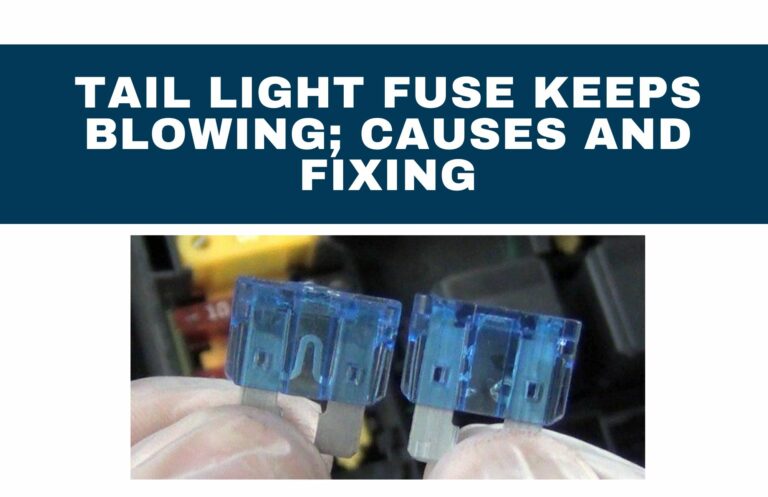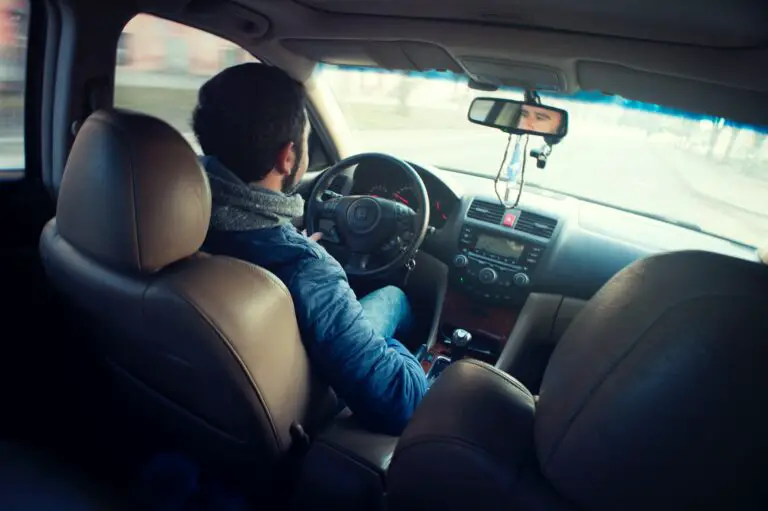What Must You Do When The Temperature Light On Your Dashboard Comes On?

When the temperature light on your dashboard illuminates, take immediate action. Reduce speed, turn off A/C, pull over safely, and open the hood cautiously. Check coolant levels, but wait for engine cooling before adding. If unsure, seek professional assistance. Ignoring the warning risks engine damage and safety hazards.
Modern vehicles are equipped with a range of sophisticated sensors and indicators that provide essential information to drivers. Among these, the temperature warning light on the dashboard serves as a crucial alert system, signaling potential issues with the engine’s cooling system.
In this article, we delve into the importance of heeding this warning, understanding its implications, and taking timely actions to ensure your vehicle’s optimal performance and your safety on the road.
Table of Contents
- What is the temperature warning light, and what does it do?
- When does The Temperature Light On Your Dashboard Comes On?
- What Must You Do When The Temperature Light On Your Dashboard Comes On?
- Can you drive with an engine temperature warning light?
- How do I stop my car from overheating?
What is the temperature warning light, and what does it do?

The temperature warning light, often depicted as a thermometer or an icon resembling a thermometer within a droplet, is a vital component of a vehicle’s dashboard instrumentation. This warning light is directly linked to the engine’s cooling system and serves as an early indicator of potential overheating issues.
When the temperature warning light activates, it signifies that the engine’s operating temperature has exceeded safe limits. This can result from factors such as a malfunctioning cooling system, low coolant levels, a faulty thermostat, or other issues that compromise the engine’s ability to regulate its temperature. Ignoring or neglecting this warning could lead to severe engine damage or even a breakdown.
Essentially, the temperature warning light acts as an essential safeguard, prompting drivers to take immediate action to prevent engine overheating and potential costly repairs. It underscores the importance of attentive vehicle maintenance and the need to address cooling system issues promptly to ensure both the longevity of the engine and the safety of the vehicle’s occupants.
When does The Temperature Light On Your Dashboard Comes On?
The temperature warning light on your dashboard typically comes on when the engine’s operating temperature exceeds safe levels. This can occur due to various reasons, including:
- Engine Overheating
Engine overheating occurs when the internal combustion process generates more heat than the cooling system can dissipate.
A malfunctioning radiator fan, a clogged radiator, a broken water pump, or a stuck thermostat can cause this. As the temperature rises beyond safe levels, the temperature warning light is triggered to alert you to the issue.
- Low Coolant Levels
Coolant, also known as antifreeze, is essential for maintaining proper engine temperature. Low coolant levels, whether due to a leak or insufficient coolant in the system, can hinder the cooling process and cause the engine to overheat.
- Faulty Thermostat
The thermostat regulates the flow of coolant through the engine. Coolant circulation is restricted if it becomes stuck in the closed position, leading to overheating. Conversely, a thermostat stuck in the open position can prevent the engine from reaching optimal operating temperature.
- Blocked Radiator
A radiator obstructed by debris, dirt, or bugs impedes the flow of air needed for effective heat exchange. This can result in inadequate cooling and trigger the temperature warning light.
- Malfunctioning Water Pump
The water pump circulates coolant throughout the engine to manage temperature. A malfunctioning water pump can disrupt this process, causing overheating.
- High Ambient Temperatures
Extreme weather conditions, especially during hot summer months, can strain the cooling system’s capacity to dissipate heat. This strain can push the engine temperature to dangerous levels.
- Heavy Load or Towing
Carrying a heavy load or towing a trailer increases the workload on the engine, generating more heat. If the cooling system is not able to keep up with the demand, the engine can overheat.
- Stop-and-Go Traffic
In congested traffic, the engine’s cooling system may not get sufficient airflow through the radiator, leading to gradual overheating.
- Malfunctioning Sensor
faulty temperature sensor may send incorrect readings to the dashboard, triggering the temperature warning light even when the engine’s actual temperature is within safe limits.
In any of these situations, the activation of the temperature warning light is a clear indication that your vehicle’s engine is at risk of damage from overheating. Responding promptly by addressing the underlying issue and allowing the engine to cool down can help prevent costly repairs and ensure your safety on the road.
Low Oil Pressure Light After Oil Change – Causes and Solutions
Solid car care
What Must You Do When The Temperature Light On Your Dashboard Comes On?

When the temperature warning light on your dashboard illuminates, it’s crucial to take immediate action to prevent potential engine damage and ensure your safety. Follow these steps:
Reduce Speed and Load
Immediately ease off the accelerator and reduce your speed. If you’re driving on a highway, move to the right lane and drive at a slower pace. If you’re carrying a heavy load or towing, consider finding a safe place to pull over and unload some weight. This reduces the strain on the engine, helping it cool down faster.
Turn Off A/C
Air conditioning puts extra load on the engine, which can contribute to overheating. Turn off the A/C system to reduce the workload on the engine.
Turn on Heater
Although it might be uncomfortable, turning on the heater can help dissipate heat from the engine. The heater draws heat away from the engine and into the cabin, helping to regulate the temperature.
Pull Over Safely
Look for a safe spot to pull over. Avoid stopping suddenly in traffic, as this can be hazardous. If possible, find a parking lot, a rest area, or a safe shoulder on the side of the road.
Open Hood Carefully
Once you’ve stopped, let the engine idle for a few minutes. This allows some heat to dissipate. Then, with caution, open the hood slightly to let more heat escape. Be careful not to touch the radiator cap or any other hot components.
Check Coolant Level
Look at the coolant reservoir (it’s usually translucent and located near the radiator). If the coolant level is low, it could be a sign of a leak or other issues. If the radiator cap is accessible and the engine has cooled down, you can carefully open it to check the coolant level there as well.
Call for Assistance
If you’re unsure about the cause of the overheating, the temperature continues to rise, or you’re not equipped to handle the situation, it’s best to call for professional help. Contact roadside assistance or a mechanic to assess the situation and provide guidance.
Wait for Cooling
Give the engine ample time to cool down completely before attempting any further actions. This could take at least 30 minutes. During this cooling-off period, you can contact a mechanic, a friend, or a family member for advice or assistance.
Remember, addressing an overheating engine promptly is crucial to avoid severe damage. Your safety is paramount, so if you’re unsure about what to do or if the situation escalates, don’t hesitate to seek expert assistance.
Can you drive with an engine temperature warning light?
Driving with the engine temperature warning light on is not advisable. It indicates potential overheating, risking engine damage. Continuing to drive may worsen the situation, leading to costly repairs or breakdowns. Safely pull over, turn off the engine, and allow it to cool.
Check coolant levels and look for visible issues. If unresolved, consult a professional. Ignoring the warning light can compromise safety, engine performance and may lead to a complete engine failure, leaving you stranded.
How do I stop my car from overheating?
Preventing your car from overheating is crucial for maintaining its health and ensuring safe driving. Here’s a more detailed explanation of the steps you can take:
- Regular Maintenance
Scheduled maintenance is your primary defense against car overheating. Adhere to your vehicle’s recommended maintenance schedule, encompassing tasks like coolant system inspections, radiator flushes, and oil changes.
These routines facilitate the engine’s smooth operation within safe temperature ranges, preserving its health and performance.
- Monitor Coolant Levels
The coolant, or antifreeze, is a pivotal player in your car’s temperature regulation. Check the coolant reservoir when the engine is cool, maintaining levels between the designated minimum and maximum marks.
If levels are low, supplement with a 50/50 blend of coolant and water to uphold efficient heat dispersion.
- Inspect Hoses and Belts
Regularly assess radiator hoses and drive belts for telltale signs of wear, cracks, or leaks. These components are integral to your cooling system’s effectiveness.
Swiftly replace any compromised parts to forestall overheating and ensure seamless cooling.
- Maintain Radiator Cleanliness
A clean radiator facilitates optimal heat dissipation. Delicately remove debris, dirt, and insects from the radiator’s fins at intervals, either with a soft brush or compressed air. Ensuring unobstructed airflow is essential for efficient cooling.
- Choose Parking Wisely
Opt for shaded parking spaces whenever feasible to minimize heat absorption by your vehicle. In the absence of shade, employ sunshades on your windows to diminish interior heat buildup, thereby easing the cooling system’s workload.
- Monitor Gauges
Vigilantly observe your dashboard’s gauges, with special attention to the temperature gauge, during your drive. Should you detect an abnormal rise in temperature, it’s a potential red flag. Safely pull over and address the situation, preventing further escalation of overheating and safeguarding your car’s well-being.
Integrating these practices into your car care routine establishes a comprehensive strategy to avert overheating, ensuring prolonged engine life, optimal performance, and a safe journey on the road.






